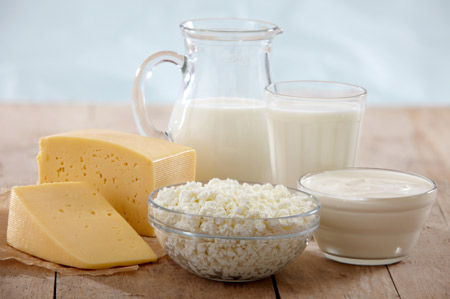Banks Feel the Pain of Dairy Downturn
Category: Dairy
 (Wall Street Journal) – The pain being felt by New Zealand’s dairy farmers from a global oversupply of milk is causing headaches for several banks in the form of soured loans.
(Wall Street Journal) – The pain being felt by New Zealand’s dairy farmers from a global oversupply of milk is causing headaches for several banks in the form of soured loans.
After falling 3.7% on an international trading platform Wednesday, prices of whole milk powder are down nearly a third since October. Tumbling dairy prices are shrinking farm profits from the U.K. to Australia, but are a mounting concern in New Zealand, where farmers loaded up on debt over the past decade to convert sheep and beef-cattle operations to dairy production and so gain exposure to high-yielding milk.
Accounting for around a third of global dairy trade, New Zealand is known as the Saudi Arabia of milk. Other major exporters include the U.S., Europe and Argentina.
New Zealand’s central bank estimates that dairy loans represent around 10% of total bank lending in the country. In December, it warned that 80% of farmers are likely to have negative cash flow in the 2015-16 season because of low dairy prices. Adding to its concerns is that those farmers are the most indebted.
Australian banks are more exposed to New Zealand’s dairy sector than global rivals, owing to a string of acquisitions of local lenders in the 1990s. While the sums going to dairy loans are a fraction of what banks make available to other businesses or to home buyers, they are big enough for executives to highlight the debt as a problem.
Commonwealth Bank of Australia Ltd. this month said loan-impairment expenses in its New Zealand business jumped by 11% in the six months through December, mainly due to increased provisions within the dairy industry.
National Australia Bank Ltd. said loans in arrears for more than 90 days as a proportion of their overall loan book had risen over the three months through December, largely due to its exposure to dairy. The bank estimated impaired dairy loans at 420 million New Zealand dollars (US$276 million), although it currently doesn’t expect any losses.
The dairy situation fits an emerging theme in global finance: Commodity loans are going bad as prices of products from crude oil to iron ore and milk powder plunge.
Commonwealth Bank—Australia’s largest company by market value—recently said impairments in its 18.9 billion Australian dollar (US$13.4 billion) loan portfolio exposed to the mining and oil-and-gas industries had more than doubled to 1.9% between June and December. In the U.S., one of the largest energy lenders, Wells Fargo, cited the sector’s “continued deterioration” for a jump in losses due to defaults by oil-and-gas companies, to US$118 million in the fourth quarter from $28 million in the third. Citigroup Inc. boosted its rainy-day reserves for soured loans for the first time since 2009, adding $250 million specifically for energy and $494 million overall.
New Zealand, with its abundant water and rolling grasslands, has transformed itself over the past decade from a country focused on wool and sheep production into the world’s biggest dairy exporter. Dairy cows now outnumber its 4.5 million people.
That shift has largely been funded by bank loans. Dairy-sector debt soared to NZ$37.9 billion at the end of June from NZ$11.3 billion in 2003.
Many indebted farmers now face an unpalatable choice: Nurse losses with no guarantee that prices will rebound soon, or become insolvent and lose their land.
Last month, Fonterra Cooperative Group Ltd.—New Zealand’s main milk exporter—slashed its forecast current-season payout to its 10,500 farmer shareholders to between NZ$4.50 and NZ$4.55 per kilogram of milk solids, from a previous estimate of up to NZ$5.
That is well below past average payouts of NZ$6—a figure on which banks had based lending decisions, credit-ratings firm Fitch Ratings said Tuesday. With low dairy prices dragging into a second season, Fitch said it expects impaired facilities to rise.
New Zealand’s central bank, which has estimated the cash-flow shortfall for the average dairy farmer to be more than NZ$1 per kilo of milk solids, ordered the five largest lenders to the industry to stress test their dairy portfolios. Officials have also held talks with banks to ensure they are setting aside realistic provisions for problem loans.
The GDT Price Index, which covers a variety of products and contract periods in the GlobalDairyTrade auction, is around 24% below its Oct. 6 peak. Prices of whole-milk powder, the most popular product, are down 31%. The auction is an international trading platform established by Fonterra.
Theo Spierings, Fonterra’s chief executive, said last month that while a dairy-price recovery will be later than originally thought, it would still likely come this year.
“Prices are clearly unsustainably low for farmers globally, and cannot continue in the longer term,” he said.




